#gillnets
Text
Extinction alert issued over critically endangered vaquita | Endangered species | The Guardian
The International Whaling Commission has issued the first “extinction alert” in its 70-year history, to warn of the danger facing the vaquita, the world’s tiniest and most critically endangered marine mammal.
A recent study shows that the small porpoise, found only in the Gulf of California in Mexico, has only 10 individuals left. It has been driven to the edge of extinction due to entanglement in fishing nets known as “gillnets”, which are now illegal in the area.
2 notes
·
View notes
Text
Amisha Patel Showing Boobs in Red Bra
jelena karleusa casino original
Cheating Girlfriend Gets Filled With Cum on Snapchat
Casadinha gozando no pau do comedor
brunette pornstars bdsm show and blowjob
HOT EBONY TEEN RIDING BBC LIKE A ROLLERCOASTER
Slut in latex mask eats cum
Bikini MILF with buttplug get doggystyled
TUSHY Little Caprice and Her Best Friend Gape Like Crazy
Horny mature arab brunette Samia Christal doing a strip on her webcam
#gillnetted#quitches#puteli#Tualati#wingmen#westlings#small-limbed#deviled#mesoarial#Gromme#parachronism#streit#deep-bellied#polydigital#speckle-coated#Archeptolemus#Volapuker#fishyard#reddock#potbellies
0 notes
Text
DYK…

zebra sharks are non-aggressive, and have few predators other than larger shark species that may be lucky enough to catch one in its jaws. as with other sharks, the largest threat to zebra sharks is humans.
zebra sharks are listed as vulnerable to extinction on the IUCN red list. the reason for the listing is largely human activities. they are heavily fished throughout their range except in australia. they are taken by inshore fisheries using bottom trawls, gillnets, or baited hooks.
#marine life#sea creatures#shark#marine biology#sharks#ocean#sea#aquatic#sealife#water#zebra shark#shark awareness#sharkie#sea animals#animals#wildlife#aminals#marine animals#ocean life#nature#i like sharks (and getou’s balls)
120 notes
·
View notes
Photo
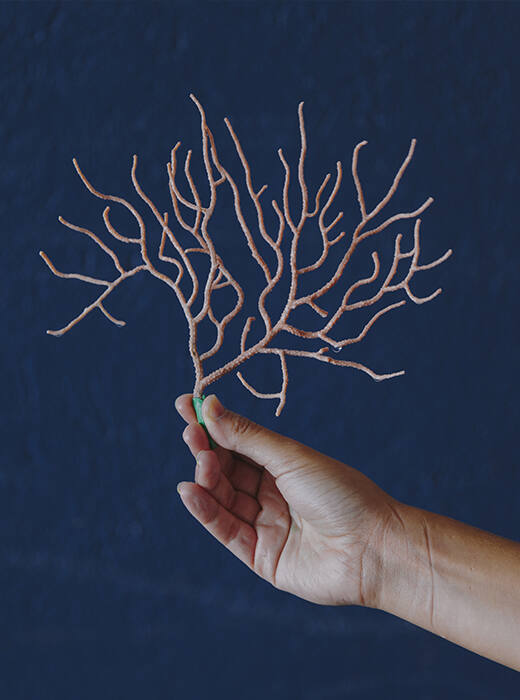
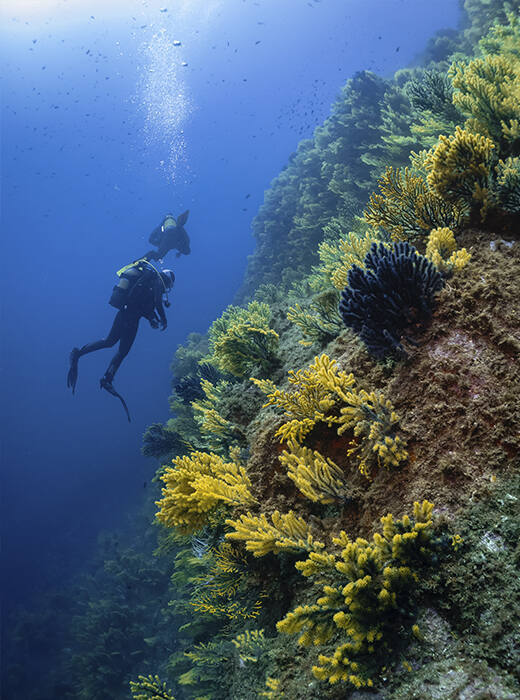
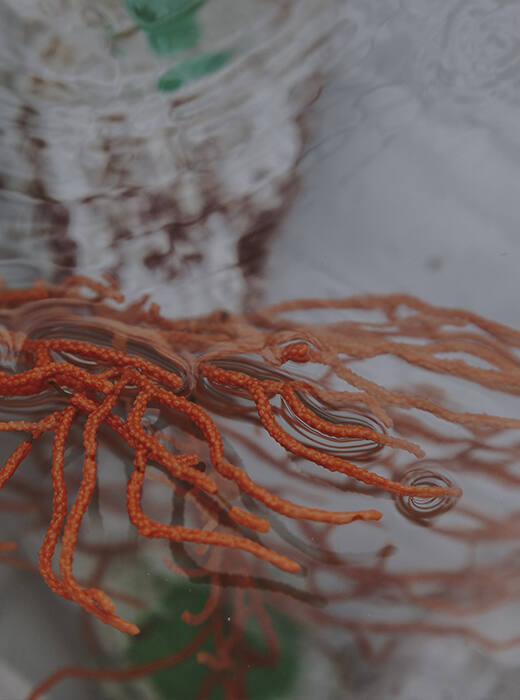
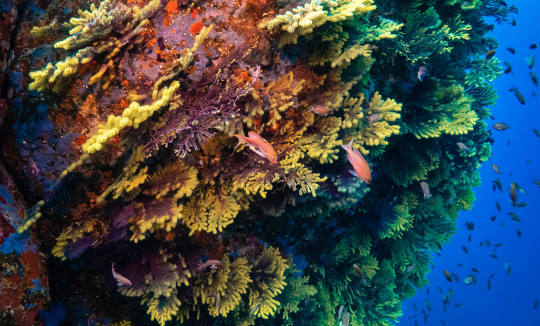
Gorgonias in the Mediterranean coast of Cap de Creus Natural Park (Comarques Gironines, Catalonia).
“The disappearance of gorgonias can cause a chain reaction that will affect the entire Mediterranean ecosystem” - Janire Salazar, Marine biologist from ICM - CSIC.
Gorgonias are organisms that make up entire underwater forests: areas in which many other species go to shelter, breed and grow. Mediterranean gorgonias currently suffer the daily impact of traditional fishing methods like gillnets. And like in any other forest, if the elements that make it up are not protected, the wildlife that it harbours will disappear. The ResCap project, which is carried out by ICM – CSIC, Fundación Biodiversidad and the fishermen’s associations of Port de la Selva and Cadaqués, aims to protect and recover all deep-sea gorgonias found in the Cap de Creus Natural Park.
Gorgonias are marine organisms which, despite the way they look, are not plants or algae, but animals. They are stationary, live in depths of more than a hundred meters, show very slow growth and take many years to recover. They are vulnerable, but great biodiversity depends on their growth. “Gorgonias are a structural species to the Mediterranean ecosystem, as they favour the growth and survival of multiple species,” says Marina Biel, one of the biologists from CSIC involved in the project.
Biologists, fishermen and agents from the Cap de Creus Natural Park work together to rescue all those gorgonias that have been accidentally trapped in fishing nets. Once recovered, the gorgonias are taken to the lab’s experimental aquariums to be studied and treated before they are freed again. When they are ready to go back to the marine environment, they are affixed to a base made of stone so that its weight will create the so-called “badminton effect” when they are released back into the sea. “The badminton effect ensures that the gorgonia will land on its feet on the seafloor and will therefore be able to feed itself and survive with no problems,” Marina Biel says.
The Pleamar projects bring to the forefront how important it is for biologists and fishermen to work together on the restoration of sea floors and the preservation of an essential species for the Mediterranean ecosystem: gorgonias. “Both parties work towards the same goal: to protect the sea floor and its biodiversity,“ ICM - CSIC biologists Janire Salazar and Marina Biel point out. Salvador Manera, a fisherman from the fishermen’s association of Port de la Selva and driving force of other sustainable projects linked to the Mediterranean, highlights how valuable these synergies will be into the future: “They help to raise awareness and to make us understand that we need to fish in a sustainable way if we want to carry on doing our job.”
Over the first year of the project (2018), more than 400 gorgonias were released back into the sea, with a survival rate above 90%. All parties involved hope to match or improve these results in 2019, as they also help to raise awareness about these kinds of initiatives. “There is an increasing number of people who are interested in marine conservation projects,” Janire and Marina say, as they insist on the meaning behind these actions: “The actions you take today will be rewarded tomorrow. It’s about giving something in return for the great things that the sea gives us each day.”
Shared from: Pleamar Projects: RESCAP & MITICAP. Institut de Ciències del Mar through Estrella Damm.
#natura#cap de creus#catalunya#marine conservation#marine biology#gorgonia#mediterranean#catalonia#sea#ocean#biology#biodiversity#wildlife#earth#ecology#sustainability#environment#conservation#wildlife conservation#marine life
253 notes
·
View notes
Text
🦈 Daily Shark Fact: 🦈
The Daggernose Shark once occurred in the shallow tropical waters of the central western Atlantic Ocean and Caribbean Sea, from Venezuela to northern Brazil, making it one of the smallest ranges of any elasmobranch species. It no longer occurs in areas of Brazil where it was previously common, due to the threat of bycatch in unregulated artisanal gillnet fisheries operating throughout its range.

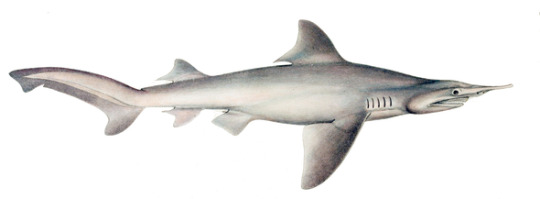
#daggernose shark#rare shark#rare species#critically endangered#shark blog#sharks#advocacy for sharks#respect the locals#shark awareness#save the sharks#cartilaginous fish#shark facts#daily shark facts#interesting shark facts#facts about sharks#shark post#sharks of tumblr#shark tumblr#just a girl who loves sharks#i love sharks#fyp#the more you know#sharks are important#sharks are cool#protect the sharks
76 notes
·
View notes
Text

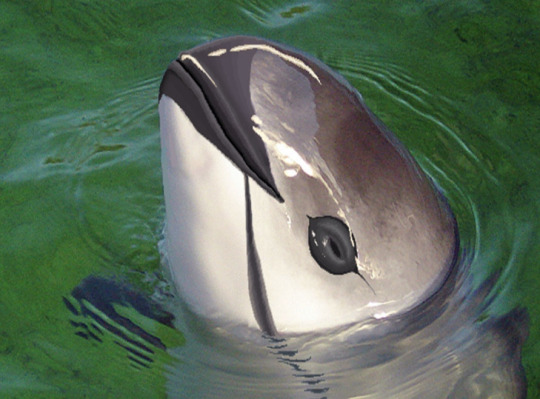


Vaquita - Phocoena sinus endangered species
(not rlly fun facts)
Fun Fact 1 : from 2011 to 2016 alone, 90% of the vaquita population has dropped and now the estimated number for 2023 is 10-13 vaquitas (they live in Mexico). Before this in 1997 there was 600 vaquitas.(;_;)
Fun Fact 2 : A vaquita is a type of porpoise. Porpoises are one of the smallest members of the cetacean familv which includes dolohins and whales. Man species of porpoise are barely studied and most of what we know of them comes from when they are found washed up.
(´;Д;`)
Fun Fact 3 : The vaquita population has been declining because of illegal fishing with gillnets for an endangered fish called totoaba which is wanted for its swim bladder. When gillnets are used many species get caught in it by accident and get tangled while trying to escape, this happens to sea turtles a lot.。゚(゚´Д`゚)゚。
Post dedicated to the Vaquita (srry i didn’t realize i missed a day)
September 12 , 2023 ^ ^
#marine biology#fun facts#ocean life#ocean#marine science#salt water#scientific names#meow#endangered species#endangered animals#vaquita#dolphin#porpoise#sad facts
15 notes
·
View notes
Note
There are four types of coral reefs!! Fringing, Barrier, Atoll and patch!! Fringing reefs are reefs that directly emerge from the shoreline, lacking a distinct deep water channel or lagoon between the reef and the adjacent land. However, there may exist shallow areas of sand bottom between the beach and the inner edge where coral growth begins.
When a fringing reef extends its growth vertically from a volcanic island that has completely subsided beneath the sea level, it gives rise to a unique coral structure known as an atoll. Atolls typically exhibit a circular or oval shape, encircling an open central lagoon, The formation of an atoll begins with the initial growth of a fringing reef around the perimeter of a volcanic island.
Over time, as the volcanic island gradually sinks, the coral continues to grow upward, maintaining its position at or near the surface of the water. As the island disappears beneath the waves, only the circular or oval-shaped coral reef remains, forming a complete ring or rim with no landmass in the center. Atolls are basically just volcanic lagoon reefs which I find the coooollesst!!
Barrier reefs, similar to fringing reefs, run parallel to shorelines; however, they are distinct in that they are separated from the land by a considerable expanse of water. This creates a lagoon, typically deep, between the reef and the shoreline.
While less common compared to fringing reefs or atolls, examples of barrier reefs can be found in both the tropical Atlantic and Pacific regions. Barrier reefs are characterized by their formation in open water, initially starting at the offshore edge and subsequently growing parallel to or towards the coast. Unlike fringing reefs, barrier reefs possess deeper channels or lagoons that separate them from the mainland. Their formation is not immediate adjacent to the shoreline, but rather occurs through the evolution of the surrounding substrate or changes in sea-level.
Patch reefs are clusters of coral formations that are physically separated by sandy rings, yet closely situated to one another. They are commonly found in shallow lagoons within larger collective reefs or atolls.
There’s also bleached reefs but they’re pretty new and it’s due to climate change and water rising. I think the ecosystem becomes different and the algae eats on the bacteria that’s on the coral and that’s why they loose color but I could be wrong!! This is Pavi signing off and I’ve hoped you enjoyed this lecture about coral reefs!! + bonus you get shark ramble
There critically endangered which is sad because they're so cute. They're found in both salt and freshwater which is rare!! And only fish of the euryhaline species so your salmon, eels, flounder, and three more species can do?? I'm not sure about sharks but considering there are only 500 now I'd count that as special.
The speartooth shark is found in New Guinea and northern Australia in the bottom of rivers (almost like its in the name). Their habittat is shrinking because illegal gillnetting ( hook and line fishing), commercial and recreational fishing along with just pollution in general.
There are about 2000 left which is sad and I hate it here like just let the sharks live. People say that sharks are dangerous when it's dolphins who are they're literally horrible creatures. The only reason why sharks bite is because they're curious and can't reach out with their fins. Their nose and teeth are how they like...idk it's their sensory. It's how they view the world even with eyes they aren't always the best so they bite.
that's actually super cool!! i'm like- terrified of the ocean but for some reason sharks have never given me the ick that's so nice to know about them (not the deaths that's despicable and based on the little i know, "shark attacks" aren't as common as portrayed and they rlly aren't attacks they're just the sharkies defending themselves or something similar :c)
don't dolphins like. rape people? idk if that's true but i've heard it a lot and it freaks me out, esp cuz they're seen as super smart and cute and social so not a lot of people are taught about that aspect of them and instead demonize sharks for just living :(
attols sound so interesting!! sorry i probably sound like a broken record i promise i'm genuinely interested - by volcanic does that mean they help out their environment or not? :0 i wanna do some research now omgg but thassalophobia or however you spell it sux hh
15 notes
·
View notes
Text
Animal of the Day!
Hector’s Dolphin (Cephalorhynchus hectori)

(Photo from WWF)
Conservation Status- Endangered
Habitat- New Zealand coast
Size (Weight/Length)- 60 kg; 1.6 m
Diet- Cephalopods; Small fish; Crustacans
Cool Facts- The Hector’s dolphin the smallest dolphin species in the world, along with one of the rarest. Living in small pods of around five members, these pods are often all female or all male. Female pods are often accompanied by babies as they learn how to hunt. Due to overfishing and disease, the Hector’s dolphin is declining rapidly. Luckily, a massive stretch of coast off New Zealand has prohibited gillnet fishing. Five marine sanctuaries have been created to help save this incredible species.
Rating- 13/10 (7,000 left and hope for more in the years to come.)
#Animal of the day#Animals#Dolphins#Mammals#Marine animals#Friday#July 22#Hector's dolphin#biology#science#conservation#the more you know
102 notes
·
View notes
Text
Blue Shark - Prionace glauca

"Blue sharks are curious, open-ocean predators that live throughout the global ocean, from the tropics to cold temperate waters. They spend most of their lives far from the coast and are truly a pelagic species. The common name comes from the blue color of the skin, unique among the sharks. Though they may reach lengths of up to nine or ten feet (3 m), blue sharks specialize in relatively small prey, including small pelagic fishes and small squids, and they undertake regular feeding dives to deeper pelagic waters, likely to hunt.
Blue sharks are known to be highly migratory, with individuals making several trips across entire ocean basins throughout their lifetimes. Experts believe that blue sharks use their large pectoral fins (horizontal fins growing out from either side of the body) to ride long currents, conserving energy as they migrate. Blue sharks go on these long migrations to reach areas of dense food resources and to find potential mates. For most of the year, males and females of this species live in different places. Only during the mating season do they come together, briefly, and reproduce via internal fertilization. Males may aggressively bite females during mating, so females have thick protective skin, to prevent injury when they come in contact with males. Females give live birth, and litters are known to rarely reach sizes of more than 100 pups.
In some places, the blue shark is an important species to marine tourism as divers, photographers, etc. enjoy encountering it. In rare instances, individuals have bitten people, but this happens only very infrequently. The blue shark has one of the largest geographic distributions among the sharks and was historically one of the most (if not the most) common pelagic sharks in the world. Its wide distribution and dense population structure makes the blue shark a target of fisheries in some areas and a common accidentally caught species in gillnet and longline fisheries targeting other species. Furthermore, its fins are considered highly valuable, and blue sharks may be the target of illegal ‘shark finning’ operations, where the fins are cut off and kept, while the rest of the shark is wasted. Though experts believe it is only ‘near threatened’ with extinction (as a result of its wide range), the blue shark’s numbers have decreased by as much as 80% in some areas. " - Oceana




11 notes
·
View notes
Text

THERE ARE ONLY TEN VAQUITAS LEFT
Vaquita, the world's rarest marine mammal, is on the edge of extinction. The plight of cetaceans—whales, dolphins, and porpoises—as a whole is exemplified by the rapid decline of the vaquita in Mexico, with about 10 individuals remaining. This little porpoise wasn't discovered until 1958 and a little over half a century later, we are on the brink of losing them forever. Vaquita are often caught and drowned in gillnets used by illegal fishing operations in marine protected areas within Mexico's Gulf of California. The population has dropped drastically in the last few years.
#vaquita#conservation#endangered#endangered species#wildlife#sea#sealife#dolphin#whales#porpoise#wildlife conservation#help#important psa
18 notes
·
View notes
Text
The Rarest Animal in the World: The Vaquita
How rare is the vaquita? There are only 10 left in the world.
The vaquita is a small porpoise found in the waters of Mexico. They weren’t discovered until 1958 and now they’re almost gone. Why? They get tangled in gillnets being used for illegal fishing in the area. The real target is the totoaba, which have a $4,000/pound of swim bladder price. The vaquita are a terrible consequence of…

View On WordPress
3 notes
·
View notes
Text
Vaquita
Facts

The world's rarest marine animal, the Vaquita, is on the verge of extinction. The fast collapse of the vaquita in Mexico, with only approximately 10 individuals living, exemplifies the condition of cetaceans as a whole—whales, dolphins, and porpoises. This tiny porpoise wasn't spotted until 1958, and now, more than half a century later, we're on the verge of extinction. Vaquitas are frequently trapped and drowned in gillnets employed by illicit fishing activities in Mexico's Gulf of California marine protected areas. In recent years, the population has decreased dramatically.
Website
STATUS: Critically Endangered
POPULATION: About 10 individuals
SCIENTIFIC NAME: Phocoena sinus
HEIGHT: Up to 5 feet
WEIGHT: Up to 120 pounds
HABITATS: Marine (only in the northern Gulf of California)
A wide dark ring surrounds the vaquita's eyes, and dark patches on its lips form a thin line running from the mouth to the pectoral fins. It has a dark gray dorsal surface, pale gray sides, and a white underside with long, light gray patterns on the ventral surface. A wide gray fringe of color runs from the head to the flukes, passing between the dorsal and pectoral fins, and is present in newborn vaquita. They prefer to stay close to shore in the Gulf's shallow waters, but if a boat approaches, they will immediately swim away.

Why They Matter
The vaquita is the world's most endangered cetacean. With only about ten individuals left, the species will become extinct unless a complete gillnet ban is enacted across its entire habitat. The WWF is working hard to guarantee that they can survive and prosper in their natural environment.
Threats
If fishing bycatch is not addressed promptly, the vaquita will become extinct. Nearly one in every five vaquita is entangled in gillnets designed for other marine species, such as the totoaba, a critically endangered fish located in the upper Gulf of California. The principal reason for the vaquita's extinction by the mid-1970s was entanglement in totoaba gillnets. Totoaba were overfished by the mid-1970s, and Mexico and the United States declared them endangered in 1975 and 1979, respectively.

International trade in totoaba is currently prohibited by CITES, a global agreement among states to control or prohibit international trade in threatened species, but rising demand for the swim bladder from China has resulted in an increase in illegal totoaba fishing in recent years. The assumption in Chinese medicine that totoaba swim bladders can heal a range of illnesses and disorders has fueled demand. Thousands of swim bladders are dried and smuggled out of Mexico, frequently through the US. Fishermen receive around $4,000 per pound of totoaba swim bladder, which is roughly half a year's worth of income from legal fishing. The dramatic reduction of vaquita numbers is being driven by this illegal trade.
Website
Patreon Token - Patronize of Animals and Environment
Website: https://patreontoken.com
Get to know the Patreon Token
The Patreon Token is a cryptocurrency created by three pet-friendly crypto fans to create support for the animal welfare and conservation organizations they love, anytime, anywhere. The Patreon Token was created on December 01, 2021. It is made of 88 million pieces and each cryptocurrency can be divided into 8 decimal places.
Our goal
Our team will distribute a minimum of 80 million PTRN tokens to various aid organizations. This means that we want to send 8,000 tokens for free to at least 10,000 animal welfare and conservation organizations, which can be sold to generate revenue. The remaining 8 million tokens will be used to develop to our project. The most important thing for us is that all animal welfare and conservation organizations on the planet can be easily and instantly supported by everyone, wherever they live or stay in the world.
#vaquita#cet#dolphins#whale#ocean#protection#mexico#usa#united states#china#fishing#illegal#nature protection#nature welfare#nature#animal#animals#animal protection#save the environment#environment
14 notes
·
View notes
Note
Don't know If you have chosen a charity yet but, may I suggest one related to the protection of the vaquita marina? these are truly beautiful cetaceans; unfortunately they are literally on the verge of extinction (critical danger according to wikipedia) due to bycatch with gillnets and the destruction of their natural habitat!!
We really appreciate the suggestion! We'll be sure to look into it!
2 notes
·
View notes
Link
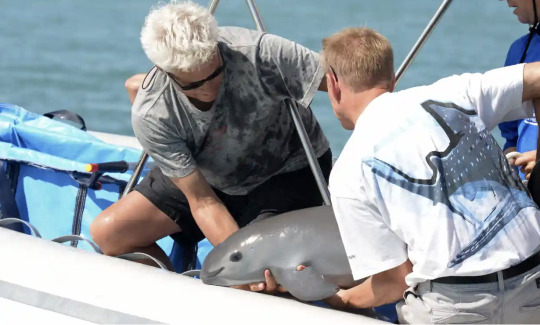
Some reason for hope, finally......Excerpt from this story from EcoWatch:
At less than five feet long, the vaquita porpoise is the smallest living cetacean and the rarest marine mammal in the world. It also has the smallest geographical range. The little porpoise with the smiling expression and dark rings around its eyes can be found only in the northern part of Mexico’s Gulf of California, and there aren’t many left. With as few as ten individual vaquita remaining, their numbers have dropped dramatically in recent years, due to the illegal gillnets used by fishing operations within marine protected areas in the Gulf of California, according to the World Wildlife Fund.
New research indicates that, while the few vaquita that remain have been skirting extinction for years, those few that survive are reproducing and may have found ways to avoid the gillnets that threaten their species, the University of St Andrews said in a press release.
The findings of the research, “More vaquita porpoises survive than expected,” were published in the journal Endangered Species Research.
“Finding any vaquita in the area is a surprise, given the rapid declines detected in previous surveys. These survivors are the future of an endemic species of Mexico and must be protected,” said lead author of the research Dr. Lorenzo Rojas-Bracho of the National Institute of Ecology and Climate Change in Mexico, according to the press release.
Seven to 15 vaquitas were spotted in 2019, the researchers estimated, and from five to 13 individuals last year. Calves were seen both years. Earlier research had estimated that less than 20 vaquita survived in 2018, with the population decreasing by about half each year.
Scientists have said the only hope for vaquita recovery is for local fishers to stop using gillnets to catch fish and shrimp in the vaquitas’ small territory, as they can trap and drown the endangered porpoises.
The researchers said that extinction is inevitable for the vaquita without another form of livelihood for the fishers that doesn’t include the use of gillnets.
9 notes
·
View notes